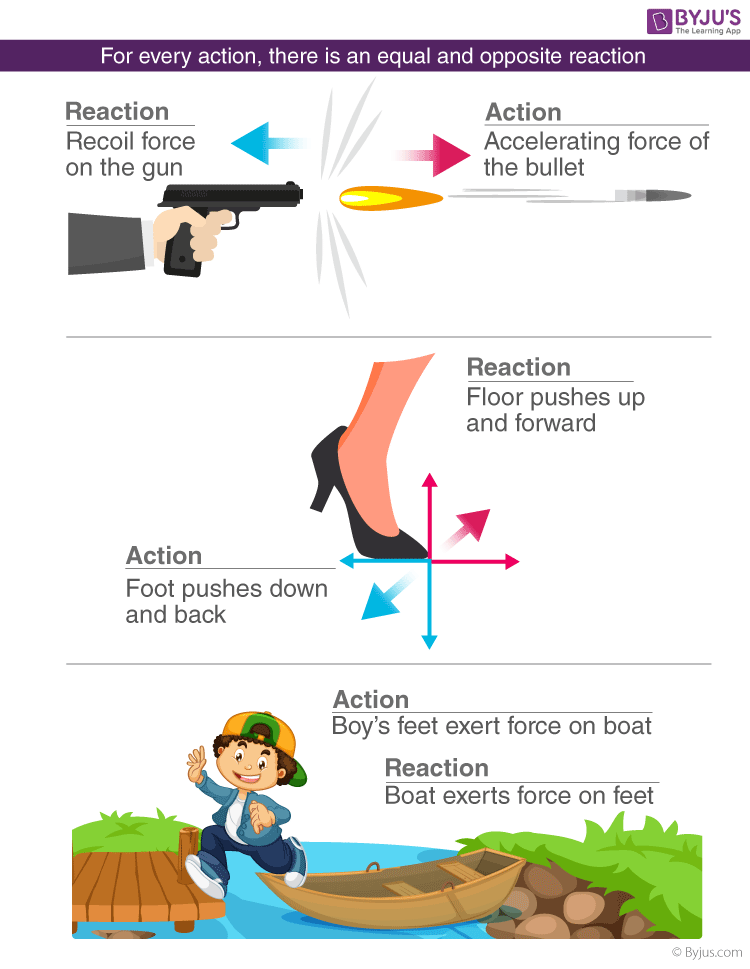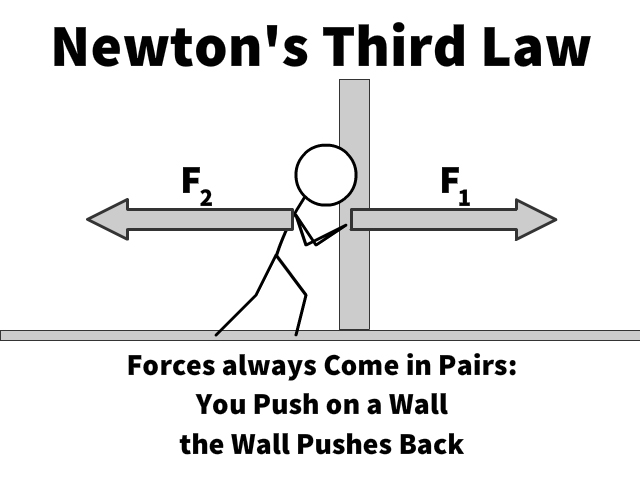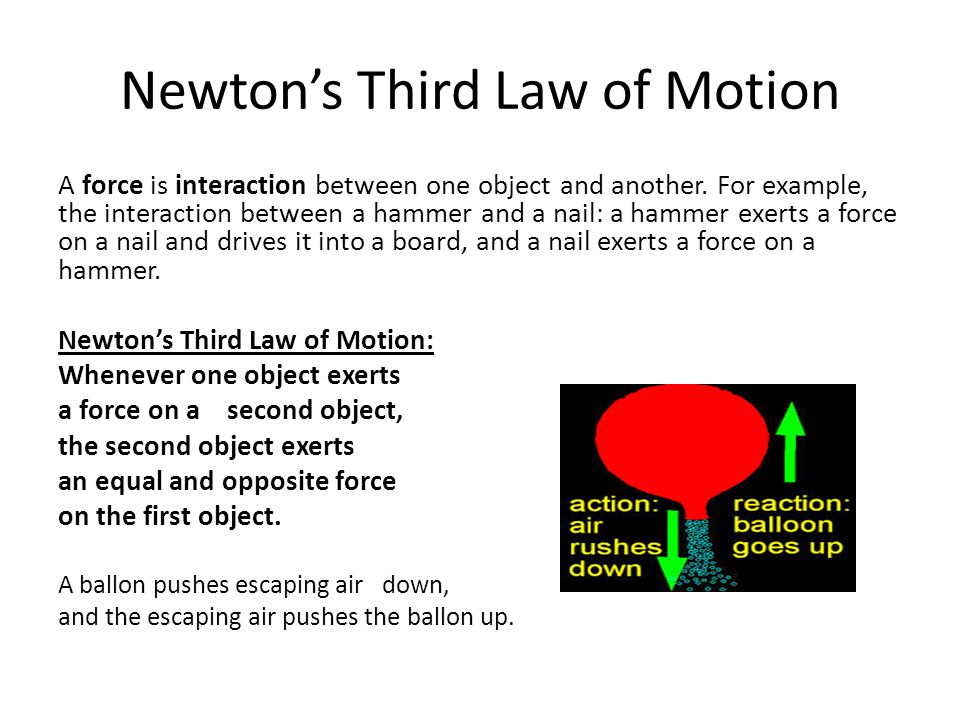Describe Newton's Third Law of Motion
Green Hartigan Elementary School 8 West Root Street Chicago IL 60609 312 535-1460 Objective. Forces always occur in pairs and one body cannot exert a force on another without experiencing a force itself.

Newton S Third Law Of Motion Explanation Interaction Force Pairs Solved Examples And Faqs
Newtons third is not a law of motion but a law of forces.

. The third law of motion states that for every action there is an equal and opposite reaction. This interaction results in a simultaneously exerted push or. Mathematically if a body A exerts a force latex oversetto F latex on body B then B simultaneously exerts a force latex textoversetto F latex on A or in vector equation.
This mini-teach is designed for grades 4 - 6. These produce a reaction force of thrust that propels the airliner forward. We sometimes refer to these force pairs as action-reaction pairs where the force exerted is the action and the force experienced in return is the reaction although which is which depends on your point of.
For example a resting box pushes down on the ground due to a gravitational force. Whenever one body exerts a force on a second body the first body experiences a force that is equal in magnitude and opposite in direction to the force that the first body exerts. The rocket exerts a force on the gases downwards and so the gases exert a force on the rocket upwards.
Forces always occur in pairs and one body cannot exert a force on another without experiencing a force itself. Or if one body exerts a force on another the second body exerts an equal and opposite force on the first. The mutual forces of action and reaction between two bodies are equal opposite and collinear.
Newtons third law of motion builds further on the first and second laws of motion. F and F are equal in magnitude and opposite in direction. If an object A exerts a force on object B then object B must exert a force of equal magnitude and opposite direction back on object A.
Newtons Third Law Of Motion Lilla E. In the first part students look at simple examples to describe the action reaction force. It is Newtons Third Law that allows rockets to launch into space.
This can be observed both in objects at rest and those that are accelerating. This law represents a specific symmetry in nature. Newtons third law of motion represents a basic symmetry in nature.
Newtons third law of motion examples Pulling an elastic band Swimming or rowing a boat Static friction while pushing an object Walking Standing on the ground or sitting on a chair The upward thrust of a rocket Resting against a wall or tree Slingshot Slapping bouncing of ball Jumping on a. This means that whenever a first body exerts a force F on a second body the second body exerts a force F on the first body. The Newtons Third Law of Motion Practice Problems has questions and diagrams to really help students break down and understand the meaning of this law of interaction.
Newtons third law states that for every action there is an equal and opposite reaction. Newtons Third Law of Motion Whenever one body exerts a force on a second body the first body experiences a force that is equal in magnitude and opposite in direction to the force that it exerts. Lets discuss it further.
This law represents a certain symmetry in nature. We used the example of pool balls on a billiards table to show how forces can be transferred from one. For example the jet engines on an airliner produce a powerful steam of hot gasses flowing backward.
Newtons third law of motion posits that for every force applied there is always an equal and opposite reaction. This is known as the reaction force. Newtons third law of motion describes the nature of a force as the result of a mutual and simultaneous interaction between an object and a second object in its surroundings.
This law represents a certain symmetry in nature. This law is sometimes referred to as the action-reaction. Pupils will verbalize and demonstrate Newtons 3rd Law of.
Forces always exist in pairs and one body cannot exert a force on another without also experiencing a force. Newtons third law of motion tells us that forces always occur in pairs and one object cannot exert a force on another without experiencing the same strength force in return. Newtons third law of motion states that when one force acts on a body an opposite action of equal force must occur.
Newtons third law states that if body A exerts a force on another body B Body B must exert a force of equal size and opposite direction on body A. Newtons Laws of Motion. Newtons Third Law of Motion Whenever one body exerts a force on a second body the first body experiences a force that is equal in magnitude and opposite in direction to the force that it exerts.

A Closer Look At Newton S Third Law Wired

Newton S Third Law Of Motion Momentum Ppt Video Online Download
No comments for "Describe Newton's Third Law of Motion"
Post a Comment